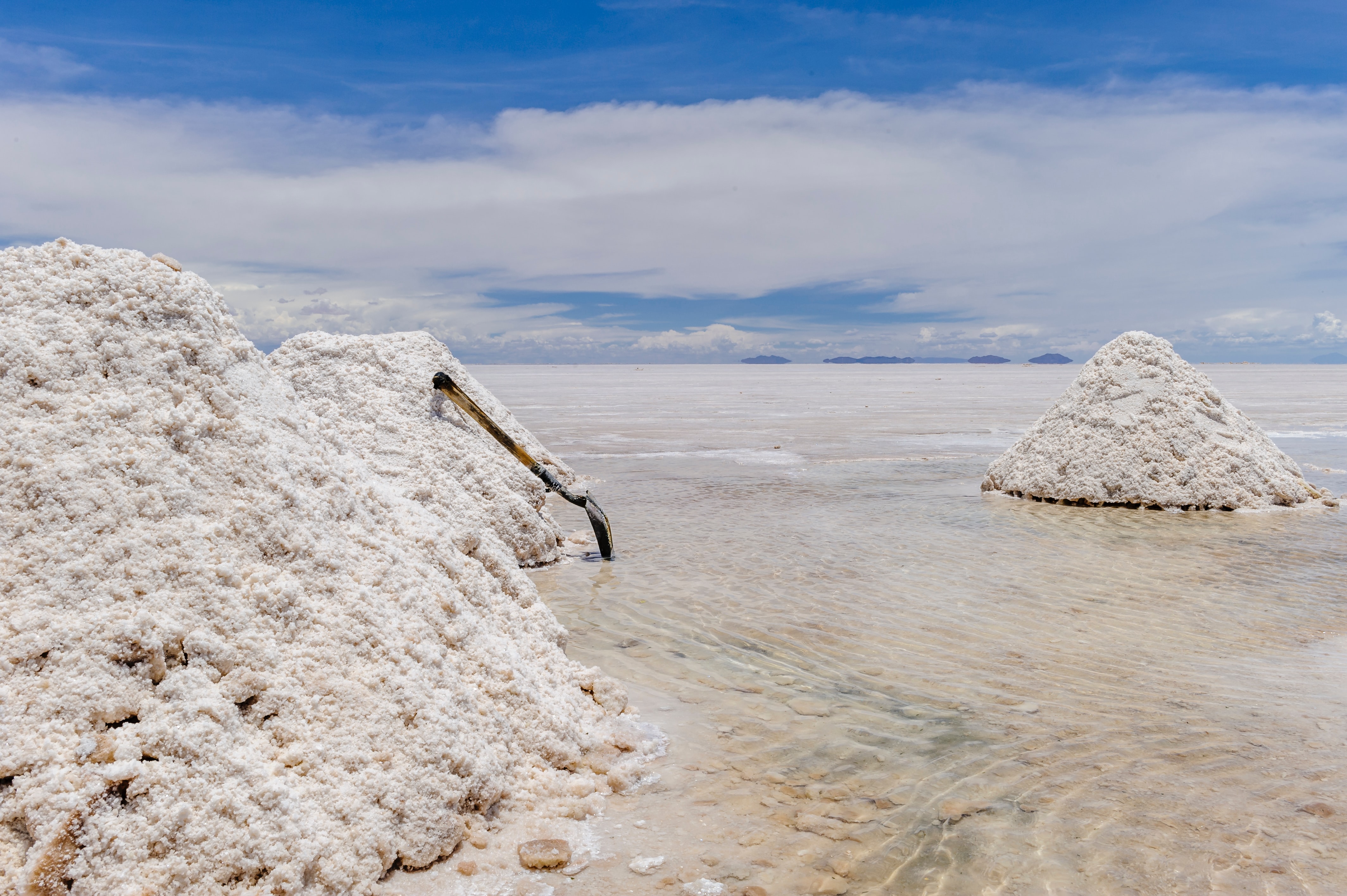Introduction: Impact of Lithium
Lithium has emerged as the critical mineral in the sustainability plans of many nations as we collectively seek to mitigate the effects of climate change by reducing our carbon emissions. Integral to electric vehicle energy storage and solving renewable energy’s intermittency issues, lithium is having a strong impact on global net-zero and low-carbon policies. But where does lithium come from?
Geological Profiles and Locations
A very reactive silvery-white metal, lithium is the lightest metal and solid element in the periodic table. It is found in most igneous – magma-based – rocks in small quantities, as well as in natural brines. There are specific types of rock forms that contain deposits of lithium-rich minerals, they are spodumene, lepidolite, jadarite, and petalite. Lithium can also be extracted through clays (hectorite) and petroleum brines (petrolithium) – these two are still emerging fields within the lithium extraction industry.
Each rock form is dominant in different geographical regions and has a varying amount of lithium held within. Spodumene is the most abundant and most lithium-rich ore, it is found in Australia, North America and parts of Europe, Russia, Africa and South America. Lepidolite deposits are located in Canada and Africa, and petalite deposits in Africa and Sweden. Lithium brines are found predominantly in South America’s ‘Lithium Triangle’ of Bolivia, Chile, and Argentina, as well as in China. Smaller brine deposits occur across North America and Europe. Overall, brines are widely seen as the more desirable extraction option than hard rock, and are the focus of many technological advancements to improve efficiency, yield, and sustainability.
Extraction Methods by Source
Lithium extraction methods are becoming the dominant form of lithium production, and can be split into separate types following the medium the lithium finds itself in: brine or rock. The latter uses the mining methods familiar with most: large machinery, soil removal and heavy chemicals, while brines use large amounts of water and chemicals to help separate lithium from other salts within the solution. Both of these have their own sets of advantages and disadvantages. Rock-based extractions are an established industry and deposits are found globally, but can have severe impacts on the environment, while brines are not as environmentally intensive and contain more lithium, but expend large amounts of water resources.
Both of these extraction methods have led to major environmental issues around the world, and public opinion has turned against lithium mining operators, as seen recently with Rio Tinto in Serbia. However, lithium’s critical role in the transition to a low-carbon future has caused prices for the metal to skyrocket in tandem with demand last year. The industry is at a crossroads – thankfully, EnergyX has a solution. Our LiTAS™ technology can extract lithium from brine using little to no water, requires no heavy metals or chemical additives, and yields a much higher amount of lithium than the traditional brine extraction methods currently in place, 90% compared to 30%, respectively.
Future of Lithium Extraction
The increased demand for lithium and soaring prices has led to larger investments in securing supply chains at a federal and international level. This has led to the discovery of significant lithium reserves in the Himalayas and Mexico, as well as mounting interest in geothermal lithium extraction in the United States and United Kingdom. Hectorite, the clay-based lithium deposit, has received more attention from mining companies, while current extraction methods are being disrupted by new technology like LiTAS™. The future of lithium extraction will look a lot different to the current status quo, and EnergyX will play a major role in it.
“Lithium extraction and its associated operations have been linked to environmental and socio-economic pressures around the world,” explained EnergyX’s Vice-President of Growth Strategy Milda Saenz, “Considering the vast amount of lithium that is needed to meet global goals on clean energy and the associated fight against climate change – decision-makers cannot afford for lithium extraction to continue as “business as usual”. It is for this reason that EnergyX is disrupting the mining industry by creating technology that improves lithium yields and reduces environmental impacts.”
Conclusion: Improving Lithium Extraction
There is no denying the impact that lithium has on worldwide sustainability goals, but we also cannot ignore the issues that its extraction has on the environment. Whether from rock or brine, the methods used to acquire lithium are outdated and raise several questions on the industry’s sustainability. Brine extraction has become a go-to for emerging technologies, and until recently, there were no sustainable alternatives for large-scale lithium extraction. EnergyX’s LiTAS™ plants will reshape how the industry operates, and the company’s plans to improve lithium supply chains from brine to battery will provide new opportunities to find workable solutions.

